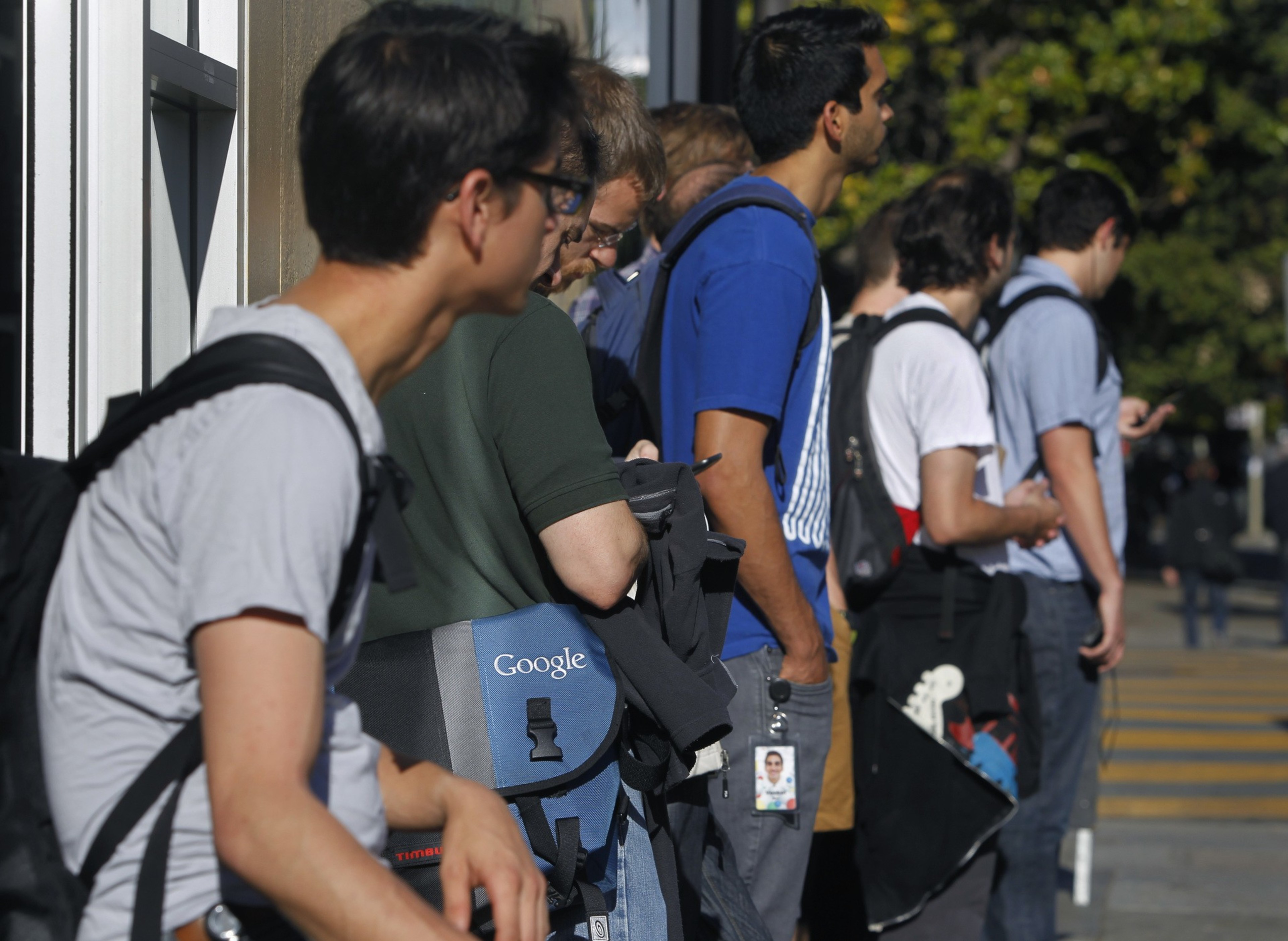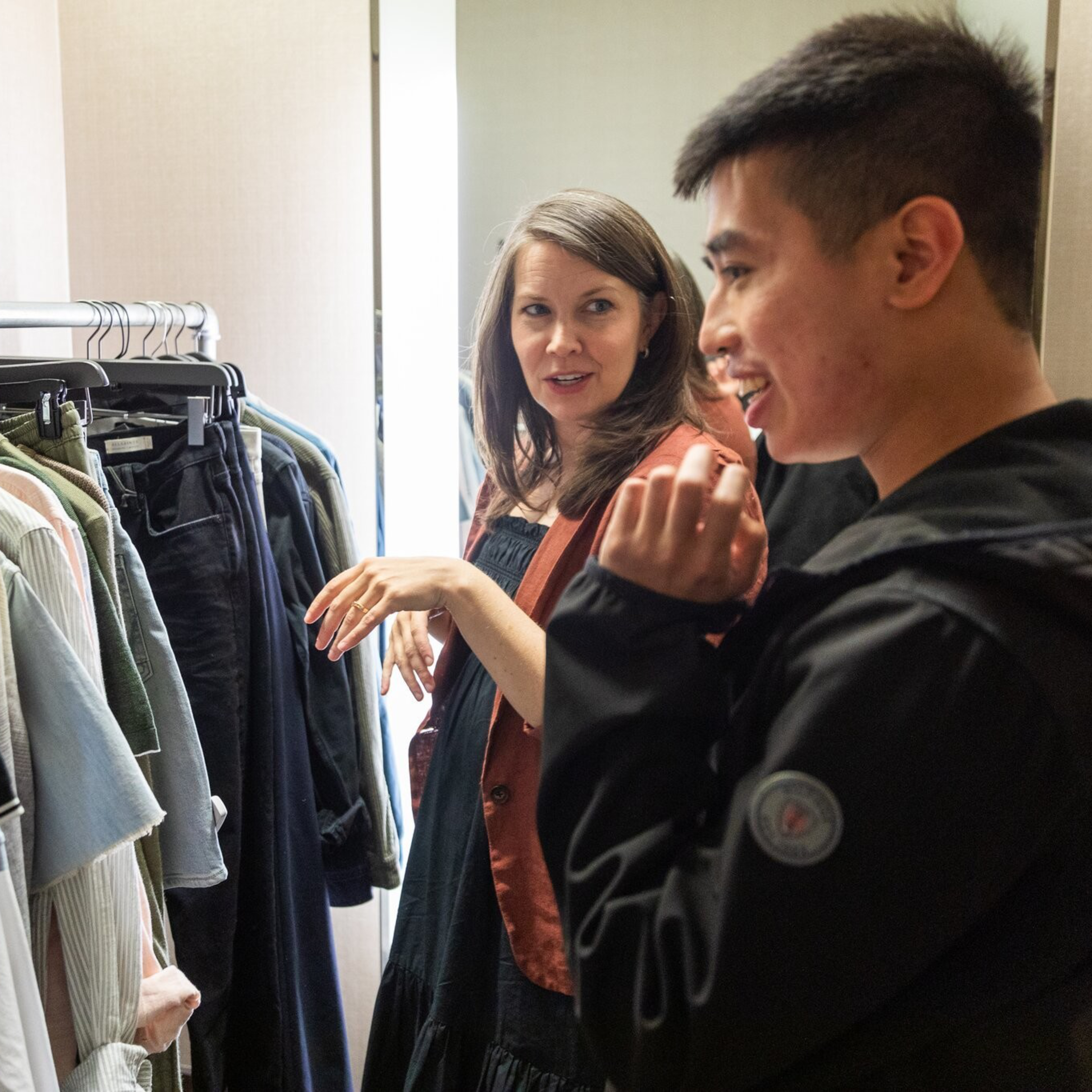A couple of months ago, venture capitalist Sarah Cone was talking to a friend about a theory: men in tech are more attractive than they’re given credit for. Really.
Cone decided to tweet her hypothesis: “tech guys are hot, actually, they just dress terribly.” San Francisco is known, after all, as the land of hoodies and ill-fitting company-branded tees. Her post got more than 2 million views.
Sensing an opportunity, Cone added that for $100 she’d “send you a link to 20 pieces of clothes that you can buy online to make you look hot” based on the prospect’s lifestyle, budget and fashion sense.

Cone and her friend received so many inquiries they’ve increased their rate to $300 an hour with plans to hike it to $500. Their process is simple. Clients send about 10 photos of themselves, and Cone and her friend ask questions to suss out their vibe.
They send around 20 links to various clothing items that can be mix-and-matched followed by a back-and-forth feedback session, like a bespoke StitchFix. Cone says they have about 40 clients right now, with a growing waitlist.
Part of the interest could be from the fact that someone (anyone?) is willing to publicly call tech workers hot. Still, the experiment is representative of a slow but significant cultural shift in San Francisco.
For years, when it came to fashion, there was nothing to see here—and what you did see, you’d rather not. GQ once put together a listicle (opens in new tab) headlined “CTRL+ALT+DEL: The 15 Worst-Dressed Men Of Silicon Valley.”
Post-pandemic though, techies seem to have awakened to the fact that there’s more to wear than ill-fitted company-branded tees and fleeces and Allbirds—which has seen a decline in popularity and a downgrade of its share price to a penny stock. (Allbirds spokeswoman Olivia Nelson said fashion is “inherently subjective” and “you’d be hard fought to find any item of clothing that everyone agrees on.”)

Even Mark Zuckerberg, whose fashion crimes include wearing similar gray tees (albeit $300 tees (opens in new tab)) daily paired with Adidas slides, has had a glow-up. He was the No. 1 fashion offender on GQ’s list.
This spring, a photo of him with his curly hair grown out from its usual Caesar-like crop cut wearing a silver chain became a meme, particularly after someone edited on a beard. The facial hair wasn’t real, but the people had spoken: Zuckerberg is now a hottie (opens in new tab).
“Being handsome is just a skill issue. Anyone can do it,” Cone said, pointing out the Meta CEO’s makeover. “He’s starting to look so cool. He’s the perfect example of someone that always looked really terrible but that wasn’t a native property of him.”
Other tech men have become style icons, too. Earlier this month, Nvidia CEO Jensen Huang, who regularly sports a black leather jacket, was photographed (opens in new tab) signing a woman’s chest at a conference.
The pandemic and the subsequent shift to hybrid work has shaken tech workers out of their style rut, said Kimberly Gant, who has spent the last decade styling people in the Bay Area. When workers were going into the office every day, they tried to blend in and were susceptible to “the lowest common denominator”—wearing free clothes with their startup’s logo.
Now, people only going in two or three days a week want to make a good impression.

“In terms of wearing company schwag, there’s less of an inclination. It’s not the base of someone’s wardrobe anymore.” Gant said. “San Francisco used to be its own worst enemy in fashion.”
Her rates start at $500 to $1,200 for a style consultation at home and a three-hour shopping trip. The price only goes up from there, based on what services a client chooses, from color and pattern analysis to closet reviews to personal shopping.
The vast majority of Gant’s 100-plus annual clients work in tech, and about 40% are men. She said she’s seen “slow strides” among techies toward “becoming more cognizant of the importance of what they wear and how it reflects what they’re doing in their lives. There is an overall bettering of fashion and style.”

On a recent Friday afternoon, Gant picked out items at Bloomingdale’s in downtown San Francisco for Aaron Kau, a 26-year-old software engineer. By the time Kau arrived, she had filed away dozens of button-downs, polos, tees, jackets, jeans and joggers in a fitting room.
“I haven’t refreshed my wardrobe in a long time and I was like, I don’t really know what I’m doing,” Kau said. He Googled something to the effect of “personal stylist” and found Gant. She asked if he was nervous—it was their first shopping session together—but he took it in stride.
When assessing each piece of apparel, Gant first looks at fit, then color, then pattern. Each time he tried an item on, she used that rubric, along with whether Kau was feeling himself. Kau’s existing wardrobe skews darker, so Gant picked out pieces that could add pops of color: a lilac v-neck polo and a sage green corduroy jacket that Kau liked more than he expected after trying it on.
“This has been so efficient,” he said. “We’ve gone through so much and I feel like we’ve got a lot of good pieces.”
At the end of the three-hour shopping session, Kau said he purchased tees, button-ups, jeans, chinos, shorts, a jacket and two pairs of shoes.
Graduating from the college look
Derek Guy, a menswear writer who has lived in the Bay Area for some two decades, believes San Francisco gets a worse rap than it deserves when it comes to dress. He would know. Guy runs the popular Twitter account @dieworkwear and has become a go-to commentator on fashion trends to his nearly 1 million followers.
But while the tech industry’s sartorial age of enlightenment may be here, the damage is already done. “Business casual was rising for decades before the tech boom but the tech boom made the hoodie a unique status symbol,” Guy said. It accelerated the casualization of officewear to an inoffensive aesthetic that is “just ugly,” with Gingham shirts and chinos fed into “this vanilla, bland, half-knot of respectability” versus suits that create a silhouette or casualwear that is unique and expressive.
Wendy Nguyen, chief marketing officer at the cardiac health startup Hello Heart, hired a stylist last fall after years of wearing “a very basic uniform” mostly from venture-backed brand Cuyana. She’s lived in San Francisco since 2003.
“It’s a very strange balance. In most tech workplaces, you’re expected to wear jeans and almost look like you didn’t put a lot of thought into what you wear,” Nguyen said of figuring out how to dress as a woman in tech. “As a person who’s later in my career, and who doesn’t want to dress like a college kid anymore, I wanted to break from that look.

Through a friend, Nguyen found a stylist who charges $40 an hour. She arrived at her home and probed her closet, forcing Nguyen to throw away anything that was stained, didn’t look good on her or simply didn’t fit. Once a quarter, the stylist will arrive at Bloomingdale’s half an hour before Nguyen and will pull apparel for her to try on. New items must complement existing staples so putting looks together is easy. The stylist also helps pick outfits for special occasions like conferences or a Wine Country weekend.
“This whole process has given me time back because I’m not doing any online shopping anymore,” Nguyen said. “I no longer have to return packages, which I used to do incessantly.”
She also doesn’t waste money on items that might linger untouched in her closet because they don’t actually integrate with her wardrobe. Several friends have since asked for her stylist’s phone number.
“I do think a lot of it was precipitated by the pandemic. People got tired of being in pajamas,” Nguyen said. “They wanted to get out and experience life, and fashion is a part of that.”
Of course—given the location—there are those in San Francisco using tech itself to fix the industry’s style woes.
Calvin Chen, 24, moved to San Francisco in January soon after starting his company, Kopia. The Y Combinator-backed startup uses AI to help improve the process of trying on clothing items virtually while shopping online.
Whenever he’d talk to users, people would tell him what they really wanted was a way to pick out and buy clothes without investing much time or energy into shopping. “People want to be told what to do because it’s so confusing and there are so many options.”
Over the last few weeks, he has been training an algorithm to create an AI personal stylist. He said Kopia already has “a couple hundred” beta testers paying a $30 flat fee for the AI stylist. Soon he plans to introduce a $20 monthly subscription fee for the feature.
The vast majority of customers are in San Francisco.
“I was surprised by how many people in SF actually care,” he said. Most people probably would be, too.

